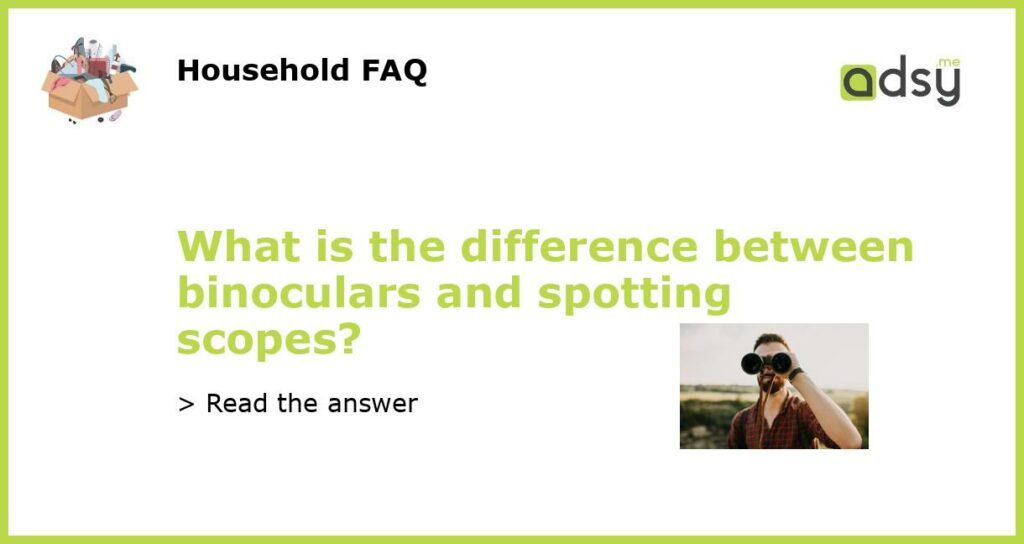Understanding the differences between binoculars and spotting scopes
Binoculars and spotting scopes are both essential tools for birdwatching, hunting, stargazing, and other outdoor activities. While they may look similar, there are significant differences between them that can affect your viewing experience. In this article, we’ll explore the main differences between binoculars and spotting scopes to help you choose the right tool for your needs.
Design and Magnification
Binoculars have two lenses that allow for stereoscopic vision, providing a 3D image of the object being viewed. They offer a wider field of view, making them great for tracking moving objects such as birds or wildlife. Binoculars typically have magnification anywhere from 6x to 12x.
Spotting scopes, on the other hand, have only one lens and use a separate eyepiece for magnification. They offer a much higher magnification than binoculars, with magnification ranging from 20x to 60x. Spotting scopes are also designed to be used with a tripod, providing more stability for longer viewing sessions.
Image Quality and Clarity
While binoculars may have a wider field of view, that often comes at the cost of image quality and clarity. Spotting scopes, with their higher magnification, offer a much clearer and sharper image than binoculars. They are also equipped with larger objective lenses, allowing more light to enter and providing a brighter image even in low-light conditions.
Portability and Ease of Use
Binoculars are generally more compact and easier to carry around, making them more suitable for outdoor activities that require mobility such as hiking or birdwatching on the go. They are also easier to use, with no need for additional tripods or accessories.
Spotting scopes, due to their larger size and higher magnification, require more set-up time and are generally not as mobile. However, they offer a more immersive viewing experience and can be indispensable for activities that require a detailed view, such as birdwatching or stargazing.
Price Range
Binoculars are generally less expensive than spotting scopes, with many models available for under $100. However, as you move up in magnification and image quality, the price can increase substantially.
Spotting scopes, due to their larger size, higher magnification, and superior image quality, are generally more expensive than binoculars. A quality spotting scope can cost anywhere from $200 to $2000, depending on the features and specifications.
Ultimately, the choice between binoculars and spotting scopes comes down to your personal preferences and intended use. If you are looking for a more portable and versatile viewing tool, binoculars may be the way to go. If you need a detailed view and are willing to sacrifice mobility for image quality, a spotting scope may be the right choice for you.






